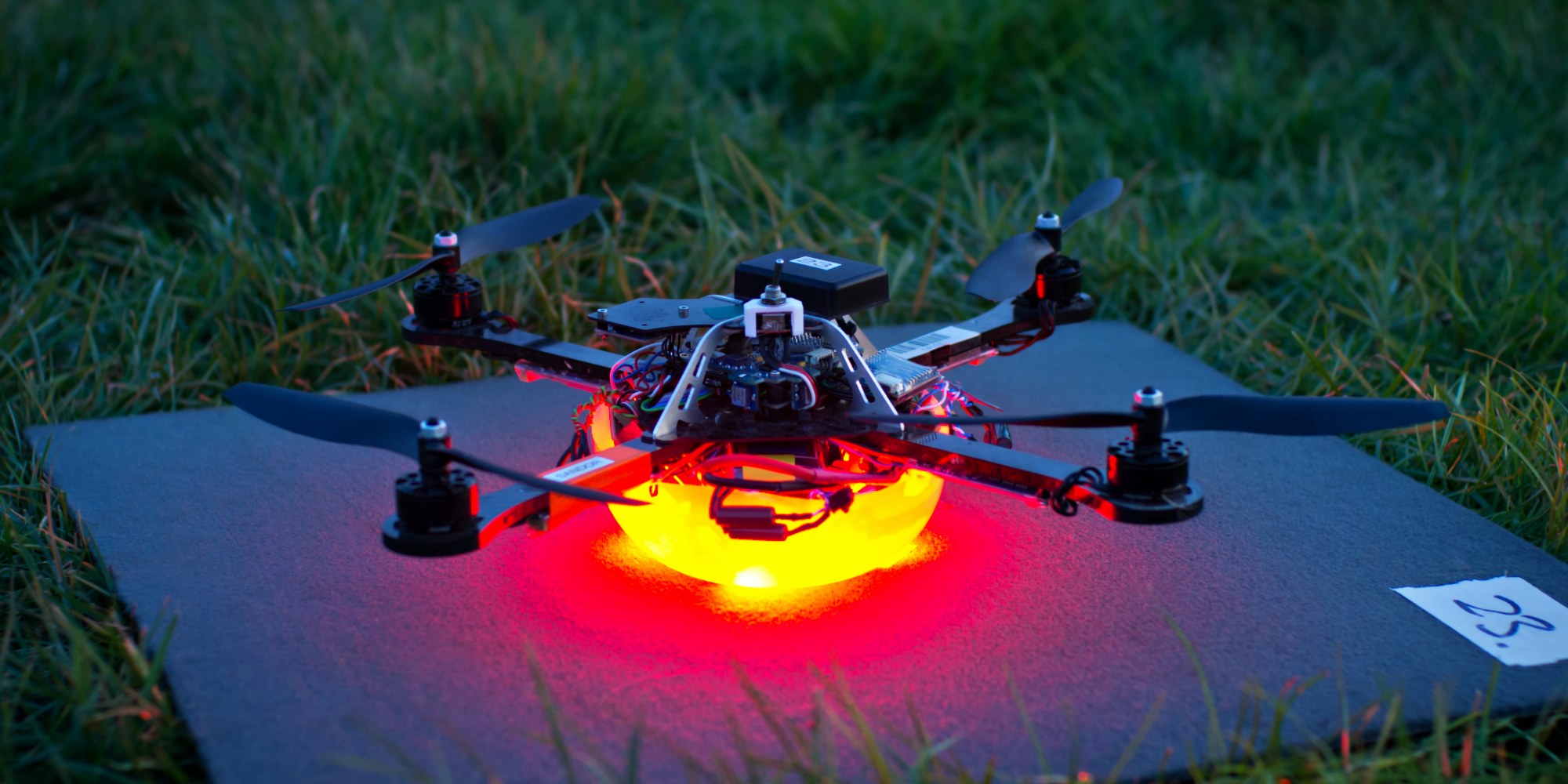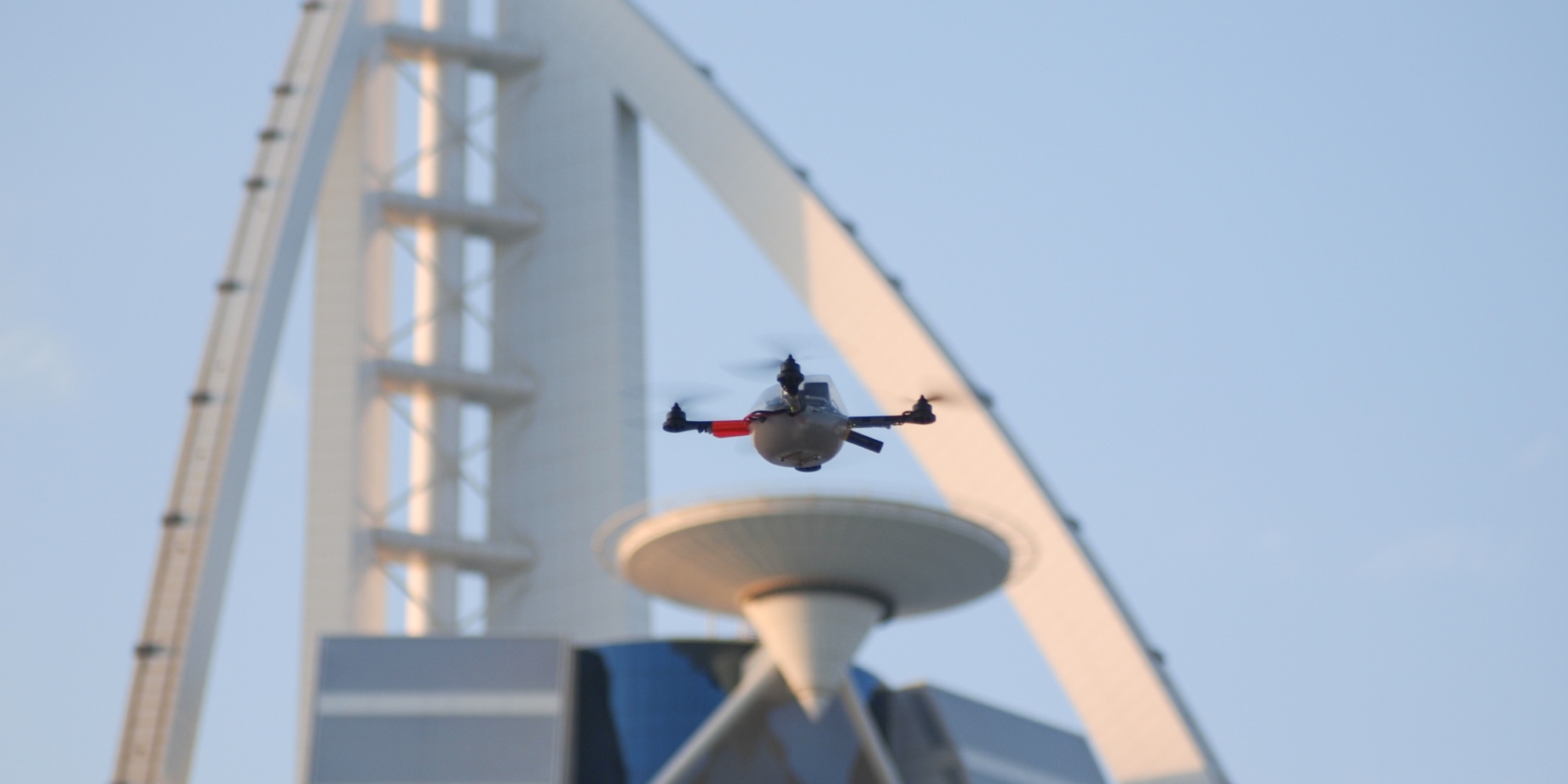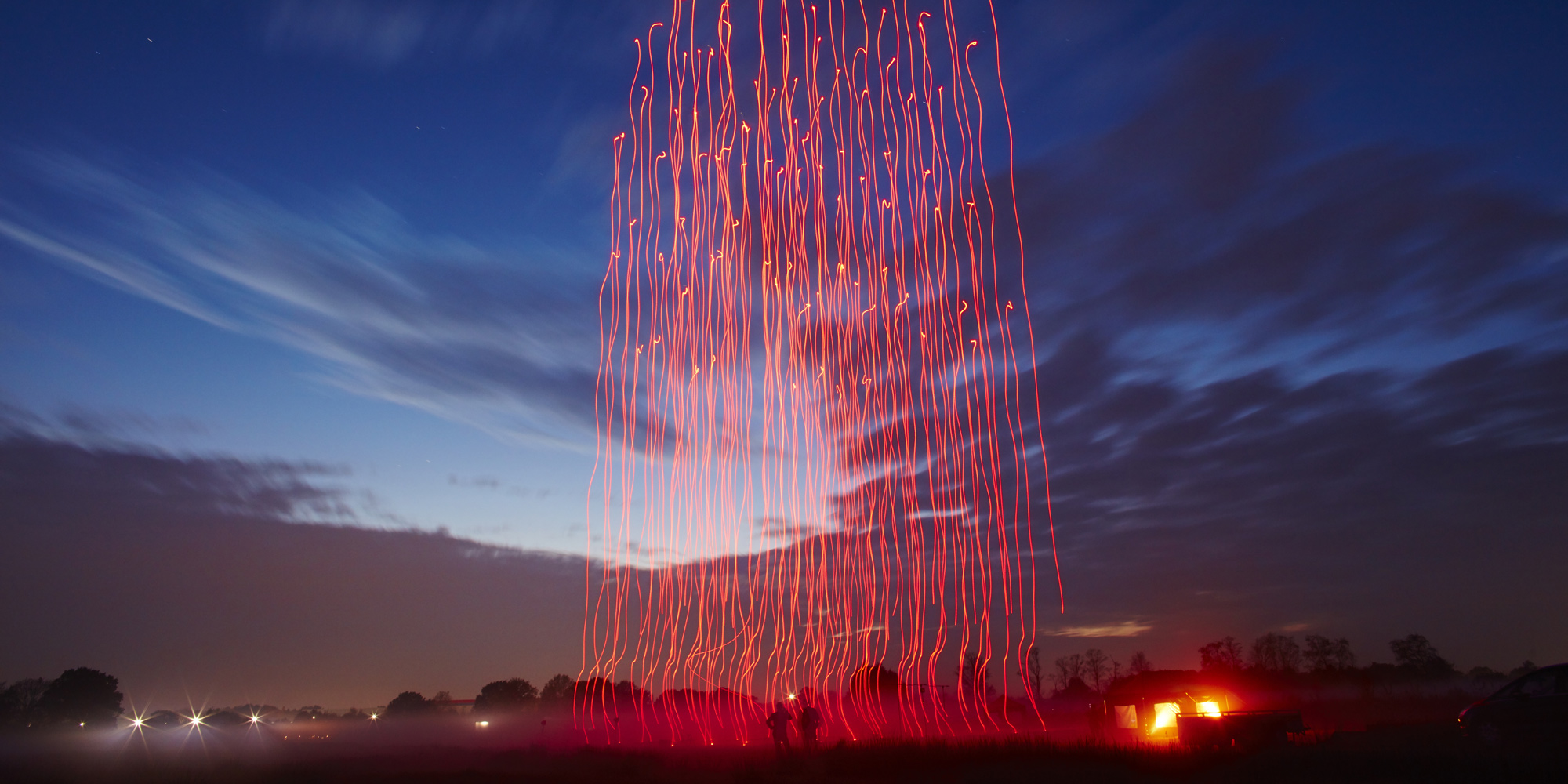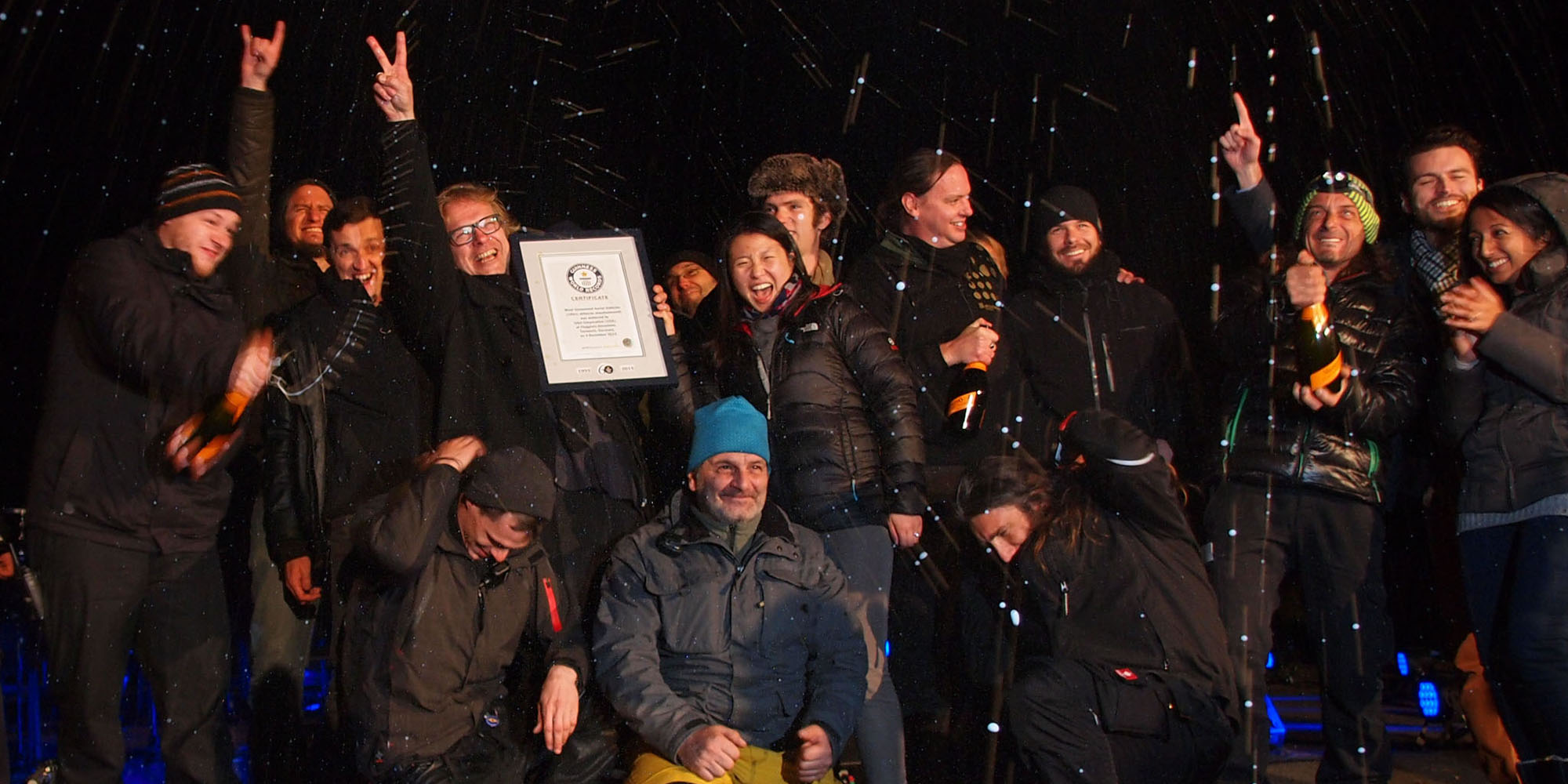






Spaxels stands for Space Pixels, which are points of light that can be freely positioned in space, which in this case are quadcopters.
Ars Electronica Futurelab’s drone swarm was one of the highlights of the voestalpine Klangwolke The Cloud in the Web, in Linz. More than 90,000 spectators lined both banks of the Danube to witness a then world record: a formation flight by no fewer than 49 autonomous drones. Never before had such a large squadron of drones performed synchronized aerial artistry outdoors. Inspired by the concept of the pixel, each drone is considered an individual point of light in real space that, as part of a synchronized group, can form dynamic, three-dimensional figures in the night sky. After the successful first show during the 2012 Klangwolke in Linz, the story of the Spaxels gathered speed. In early 2013, Paramount booked them to form the Star Fleet Logo next to Tower Bridge in London, celebating the release of the film Star Trek Into Darkness. This was followed by numerous airborne performances in locations like Brisbane or Dubai, or for events including German reunification celebrations or the European Song Contest. Then, in the fall of 2014, Intel got in touch with the Futurelab and expressed interest in peformances related to their new project, Drone 100. In their collaboration with the Futurelab, Intel called for a doubling of the number of simultaneously airborne drones in the swarm to 100, aiming at a world record for The Most Unmanned Aerial Vehicles, which was archieved in November 2015. One year later, the aerial spectacle was also shown in Linz in the course of the Ars Electronica Festival as DRONE 100 – Spaxels over Linz. While Intel subsequently pursued the Spaxels approach independently, the Ars Electronica Futurelab set itself the goal of further improving drones and software. With SwarmOS, the Lab developers created an operating system for swarms of drones, ground robots and other autonomous vehicles that is still in use worldwide today.
More pictures of over 40 years of Ars Electronica can be found in our archive.
In our Throwback series, we take a look back at past events, exhibitions, installations and other exciting happenings from the Ars Electronica universe since 1979.